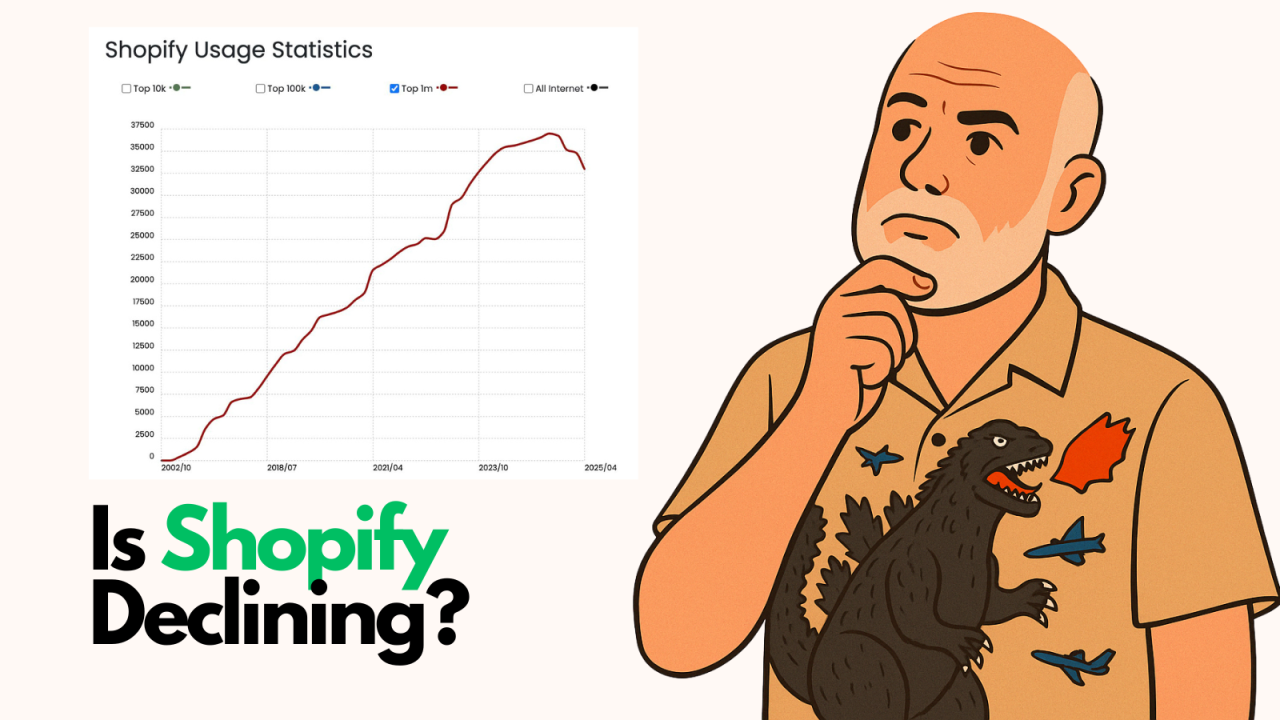
When I was running Wagento Create way back in 2017, our client Universal Music Group had a huge ask: 1200 stores on Magento. We tried many things; we tried to make it all work on one instance, but we couldn't quite get there. We ended up making some unique changes and updates to allow multiple stores in different instances using Composer and a "Builder system" - this allowed us to quickly create a Magento store with a custom frontend and a backend that matched the needs of the client.
We launched 300+ stores in 2018 and we ended up winning an award for launching the most stores on Magento by an agency.

Ultimately, the cost of creating a custom store on Magento outweighed the agility to create stores and most went to Shopify (We done Shopify!).
One thing I have noticed in the last 8 years: Magento has become more efficient. It has been honed for volume and SKU count. Where Magento struggled with SKUs, it now shines for millions of SKUs. I just met someone at the Global Leadership Conference who specifically chose Magento because their client has 3,000,000 SKUs.
I'm noticing something remarkable happening with this platform: many have prematurely declared "dead." It's not just the ability to do multi-store (It has always had this). It's the ability to really scale.
The Magento ecosystem has seen remarkable advancements on both the front end and back end in recent years. The Hyvä team has reengineered the frontend experience by completely reimagining how Magento renders pages. By replacing the heavy Luma theme with modern technology, they've dramatically reduced page load times and improved overall responsiveness.
This frontend transformation has addressed one of the longstanding criticisms of Magento - that it delivered sluggish experiences to customers.
Meanwhile, on the backend, something equally impressive has been happening. Ivan Chepurnyi recently demonstrated at Meet Magento France something that would have seemed impossible just a few years ago: a 200-domain Magento instance running on minimal hardware (3 CPU cores and 8GB RAM) at a total cost of just 190 EUR.

This isn't just a technical curiosity - it represents a profound evolution in Magento's capabilities. The platform has matured significantly in its ability to handle multiple stores, transforming what once demanded massive server investments into something that can run on modest hardware. Performance optimization techniques have advanced to the point where resource utilization is drastically more efficient than what we experienced years ago. The core technology itself has been refined and fine-tuned specifically to manage complex multi-store setups without the bloat and overhead that previously made such configurations impractical.
What once required separate installations with dedicated resources can now be managed within a single instance. The performance penalties and technical limitations we battled back in 2019 have been addressed through architectural improvements and optimization techniques that simply weren't available to us then. This isn't incremental progress - it's a fundamental shift in what's possible with the platform.
This evolution of Magento fundamentally changes the economics and capabilities for merchants running multi-store operations. Did I mention my article last week? Companies can now operate numerous storefronts without the proportional infrastructure costs that previously made such expansions prohibitively expensive. A business that once needed to budget for separate servers, databases, and maintenance for each new storefront can now consolidate operations into a fraction of the resources.
The operational benefits extend beyond just cost savings. Managing a single Magento instance instead of multiple separate installations dramatically reduces the complexity of day-to-day operations. Updates, security patches, and feature enhancements can be deployed once rather than separately across numerous instances. This streamlined approach means less downtime, fewer errors, and more efficient use of technical resources.
This new reality also enables businesses to be far more agile in their market approach. Launching new brands, entering additional regions, or creating specialized product lines no longer requires rebuilding infrastructure from scratch. The dramatically lower threshold for expansion means companies can respond to market opportunities in weeks rather than months, turning Magento from a perceived limitation into a competitive advantage.
For businesses that were steered away from Magento based on outdated perceptions about its multi-store capabilities or warnings about its future viability, Chepurnyi's demonstration completely reframes the conversation. What was once considered a technical limitation of the platform has been transformed into one of its strengths. The "Magento is dying" narrative now faces compelling evidence to the contrary.
Contrary to persistent rumors, Magento isn't dead, it's evolving. The platform continues to power thousands of successful e-commerce sites globally, with Adobe continuously investing in its development. The ongoing release of performance improvements demonstrates Adobe's commitment to the platform's future.
What we're witnessing isn't the death of a platform but its maturation. Adobe Commerce has made significant investments in core capabilities, particularly around performance and scalability, transforming what Magento can achieve.
While Ivan's demonstration was not a multi-tenant deployment, what he showed was a single Magento instance efficiently running 200 separate domains all belonging to the same merchant. This is fundamentally different from Adobe's upcoming SaaS offering, which will be truly multi-tenant (similar to Shopify's model) where multiple independent merchants share the same infrastructure.
Nevertheless, Ivan's demonstration highlights critical performance improvements in the platform. The platform's improved resource utilization showcases significant performance gains.
At the Adobe Summit in April. Adobe announced a SaaS-based version of Adobe Commerce. A fully multi-tenant solution where multiple merchants will share infrastructure. This represents a new direction for Adobe Commerce.
Importantly, Adobe has confirmed they will continue supporting Adobe Commerce on-premise, Adobe PaaS, and Magento Open Source for the foreseeable future, giving merchants multiple implementation options based on their specific needs. This isn't about abandoning existing solutions but expanding possibilities for different business requirements.
When we built those 300+ Universal Music stores in 2018, our team encountered several significant technical barriers that forced us to pivot. The database structure posed another major challenge, as queries multiplied dramatically with each added store view. What worked efficiently with five or ten stores became painfully slow at fifty or a hundred.
Now, with proper configurations and the platform's architectural improvements, these limitations have been largely overcome. The database handling has been streamlined, admin interfaces have been optimized for multi-store management, and the underlying code has been refactored to handle the scale that once seemed impossible. What previously required our team to develop custom "builder systems" and complex workarounds has evolved into capabilities built directly into the platform. The heroic engineering efforts we undertook to make those 300 stores function have transformed into relatively standard configurations that don't require extraordinary measures.

Remember having to patch your Magento store every quarter? The anxiety of wondering what might break, the late-night testing, and the inevitable surprises that appeared after deployment? While performance capabilities have dramatically improved, patching and upgrades have remained a persistent challenge for Magento merchants.
BlueFinch Commerce has released an automated patching and upgrade tool designed explicitly for Magento and Adobe Commerce. This solution addresses one of the most persistent operational headaches for Magento merchants without introducing new risks. The tool automatically validates code against the latest patches and security updates, generates necessary code changes, and provides compatibility testing to ensure smooth implementations.
What makes this particularly significant is how it reflects the maturing ecosystem around Magento. Third-party developers continue to build tools that address the platform's historical challenges, making it increasingly viable for businesses that previously found maintenance too burdensome. With solutions like Bluefinch, the total cost of ownership for Magento sites decreases while security posture improves.
This development pairs perfectly with the performance improvements we've already discussed. As Magento's core capabilities advance to handle more stores more efficiently, complementary tools like Bluefinch reduce the operational overhead of maintaining those stores. The ecosystem isn't just surviving - it's systematically addressing its historical limitations through both core platform improvements and innovative third-party solutions.
For merchants considering Magento or current users worried about the future, these developments paint a picture of a platform that continues to evolve and solve its most significant challenges. The combination of multi-store efficiency demonstrated by Ivan and maintenance simplification offered by tools like Bluefinch makes a compelling case for Magento's continued relevance in the e-commerce landscape.
If you've been hesitant about Magento because of concerns about its viability or operational costs, it's time to reconsider the ROI equation. I no longer have a financial stake in this ecosystem - my interest comes purely from seeing a platform evolve in ways that genuinely benefit merchants.
The business case for Magento has strengthened considerably. Infrastructure costs have plummeted as the platform now efficiently handles multi-store architectures with significantly fewer resources. What once required substantial server investments can now operate on modest hardware, directly reducing your monthly operating expenses.
Maintenance costs have similarly transformed. Automated patching tools like Bluefinch's solution convert what was once a resource-intensive operational burden into a predictable, lower-risk process. This translates to fewer developer hours spent on routine maintenance and more time focused on revenue-generating improvements.
Performance optimizations deliver direct customer experience benefits that impact conversion rates. The Hyva frontend revolution means faster page loads, while backend improvements ensure administrative efficiency for your team. These technical improvements translate to tangible business outcomes: higher conversions, lower bounce rates, and reduced operational overhead.
The ecosystem's innovation cycle continues to solve complex problems with increasingly elegant solutions. This means businesses can accomplish more without custom development, further improving the platform's cost-effectiveness. Even as Adobe introduces new options with their SaaS offering, these advancements strengthen all deployment models, giving businesses flexibility to choose the approach that best matches their specific ROI requirements.
Don't believe everything you hear about Magento's limitations or its supposed demise. The platform continues to evolve and solve previously insurmountable challenges. Whether you're running 2 stores or 3000, today's Magento offers capabilities that were pipe dreams just five years ago.
I've witnessed firsthand how far this platform has come. From our struggles with stores for Universal Music to today's solutions demonstrated by experts like Ivan Chepurnyi, the progress is undeniable. I'll be the first to admit I've been skeptical at times - I've even written articles questioning Magento's future direction. Yet I find myself continually refreshed to see new innovation happening at unprecedented scale.
What e-commerce challenges are you facing that you thought Magento couldn't handle? I'd be interested to hear your experiences and discuss how these new capabilities might apply to your business.

Following up on my earlier post about BigCommerce's rebrand announcement, I got my hands on theCleveland...

By Brent W Peterson AI vs Shopify: Is Platform Dominance Ending in 2025?

The B2B OG Reality Check In 1995, I built my first B2B website for my then computer assembly company. It...